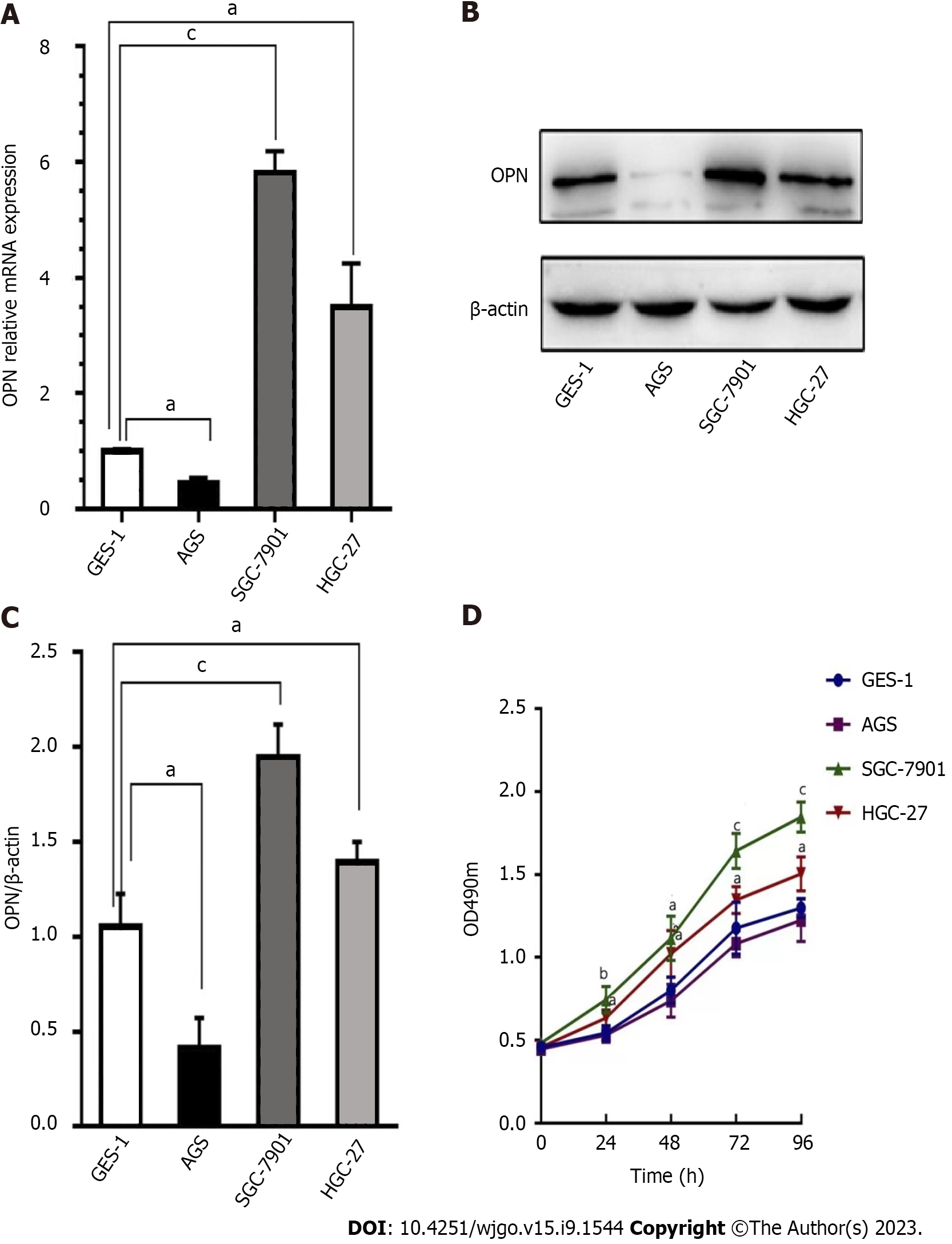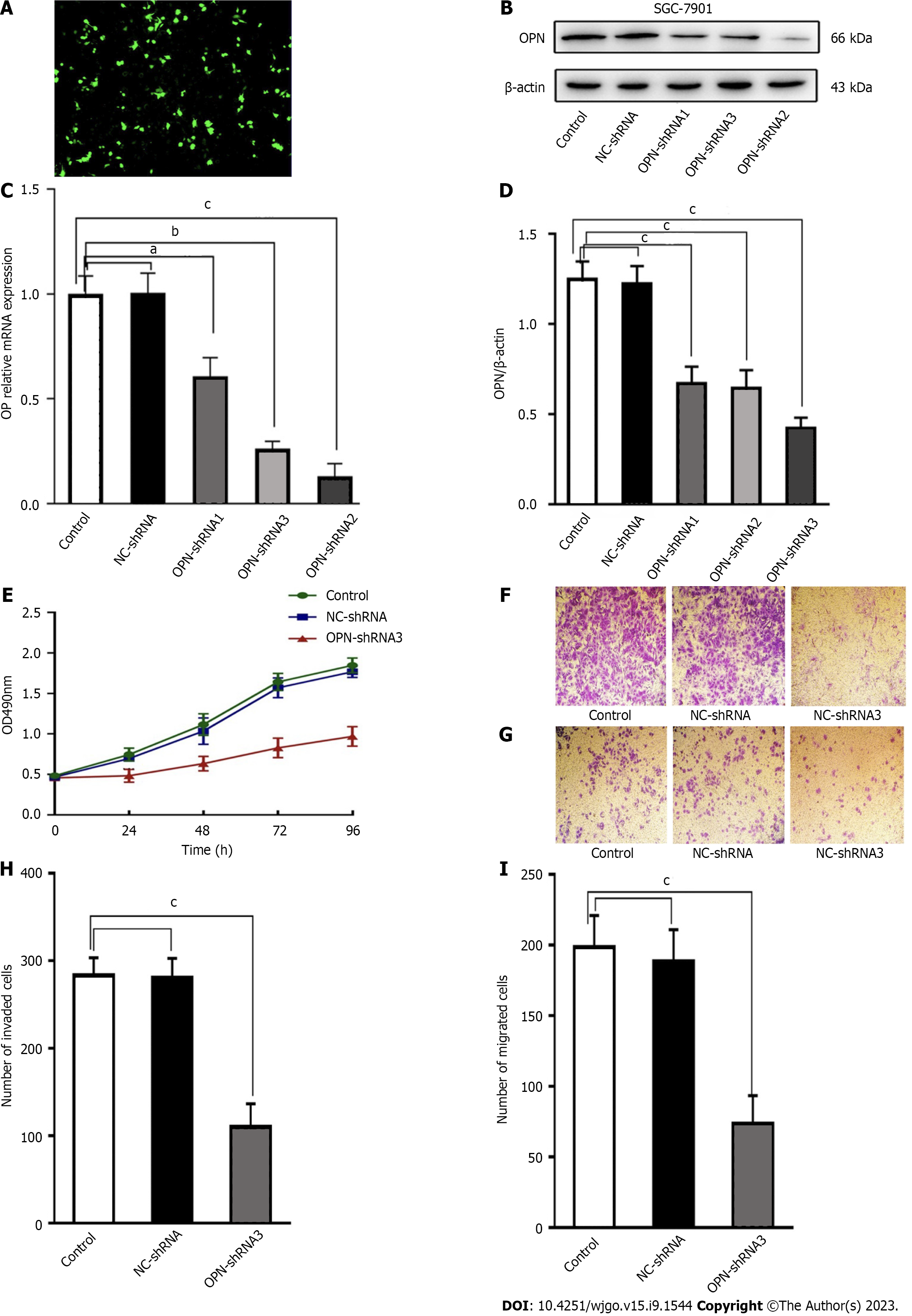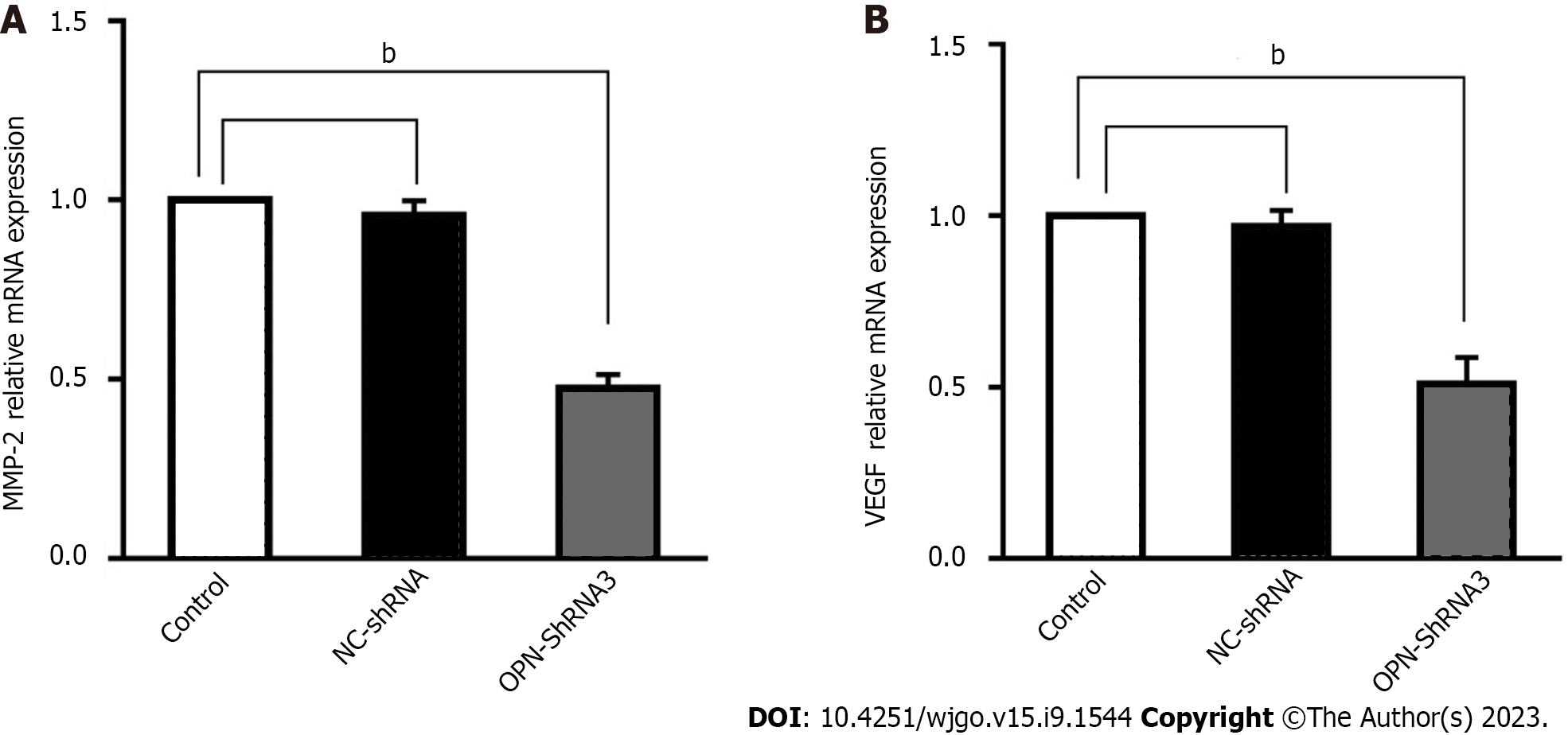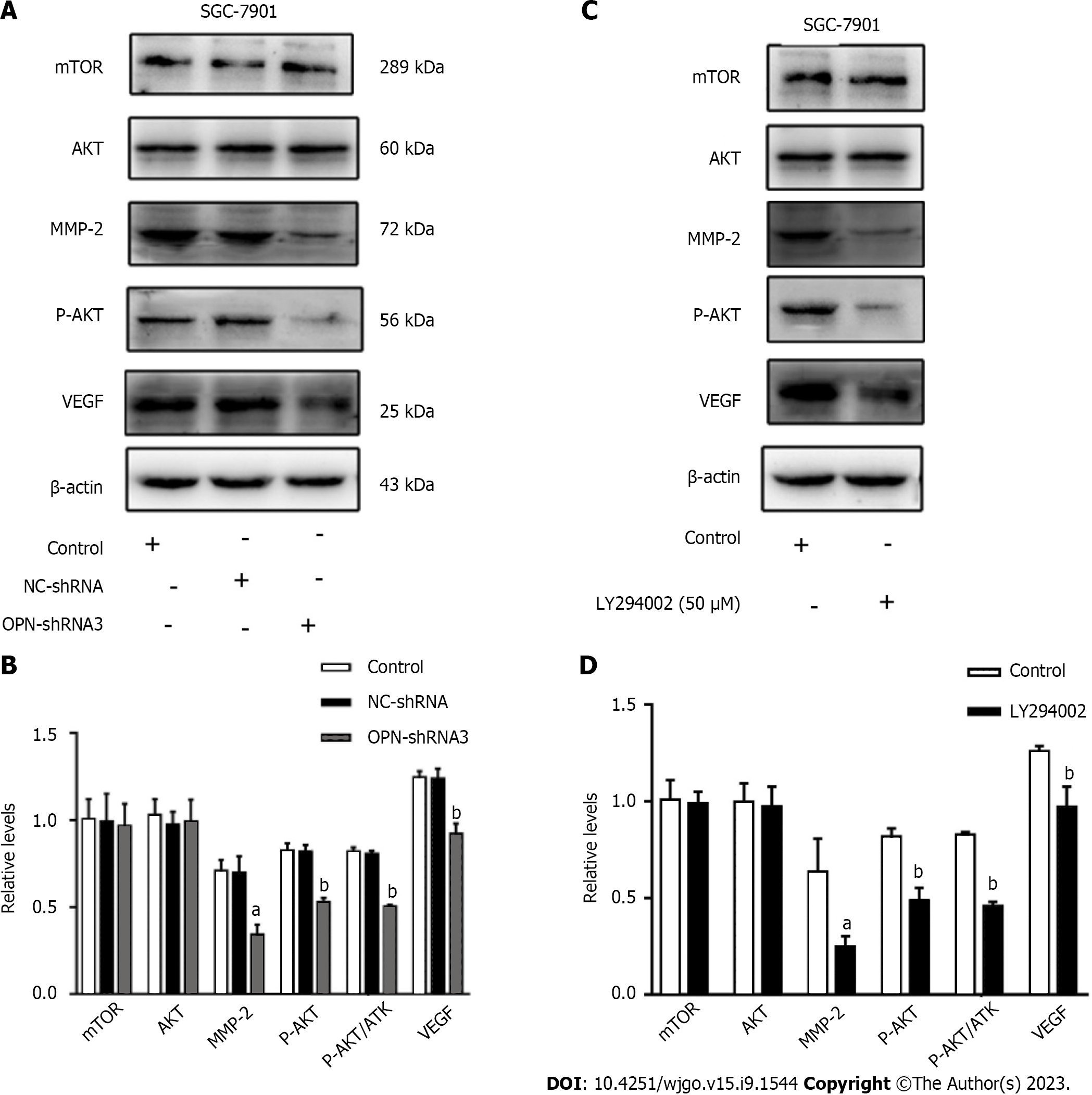Copyright
©The Author(s) 2023.
World J Gastrointest Oncol. Sep 15, 2023; 15(9): 1544-1555
Published online Sep 15, 2023. doi: 10.4251/wjgo.v15.i9.1544
Published online Sep 15, 2023. doi: 10.4251/wjgo.v15.i9.1544
Figure 1 Expression levels of osteopontin and capacity of proliferation in human gastric cancer cell lines.
A: real-time quantitative-reverse transcription analysis of osteopontin (OPN) mRNA levels in the gastric cancer (GC) cell lines (AGS, SGC-7901, HGC-27) and normal human gastric mucosal epithelial cell line (GES-1); B: Western blot assay of OPN protein expression levels in various human GC cell lines; C: Densitometry analysis of the protein bands of OPN proteins; D: The relative proliferation rate at 0, 24, 48 and 96 h in various GC cells by 3-(4,5)-dimethylthiahiazo (-z-y1)-3,5-di- phenytetrazoliumromide assay. Data are shown as the means ± SE (n = 3). aP < 0.05; bP < 0.01; cP < 0.001. OPN: Osteopontin.
Figure 2 Osteopontin knockdown inhibits proliferation, invasion and metastasis of gastric cancer cells.
A: Fluorescence microscope observation transfection efficiency of SGC-7901 cells after being transfected with osteopontin-short hairpin RNA (shRNA) (× 100); B: 3distinct, sequence-specific OPN shRNAs (OPN-shRNA1; OPN-shRNA2; OPN-shRNA3) and negative control shRNA were designed, and the OPN-shRNA3 has the best interference efficiency of OPN; C: Western blot assay of OPN protein levels in SGC-7901 cells 48 h after transfection; D: Densitometry analysis of the protein bands of OPN proteins in SGC-7901 cells 48 h after they were transfected; E: 3-(4,5)-dimethylthiahiazo (-z-y1)-3,5-di-phenytetrazoliumromide assay observation the relative proliferation rate at 0, 24, 48 and 96 h in SGC-7901 cells following transfection, compared with control group; F: Microscope observation effect of the invasive ability of OPN knockdown in SGC-7901 cells was assessed by the Transwell matrigel-coated assay (× 100); G: Microscope observation of the migrative ability of OPN knockdown on SGC-7901 cells was assessed by the Transwell assay (× 100); H and I: Cells invading and migrating through the membrane were counted in 3 random fields for respective group. Data are shown as the means ± SE (n = 3). aP < 0.05; bP < 0.01; cP < 0.001. OPN: Osteopontin; shRNA: Short hairpin RNA; NC-shRNA: Negative control shRNA.
Figure 3 Osteopontin upregulates matrix metalloproteinase 2 and vascular endothelial growth factor expression.
A: Matrix metalloproteinase 2 mRNA level was tested by real-time quantitative-reverse transcription polymerase chain reaction (PCR) and normalized to β-Actin expression; B: Vascular endothelial growth factor mRNA level was detected by quantitative PCR and normalized to β-Actin expression. Data are shown as the means ± SE (n = 3). bP < 0.01. MMP-2: Matrix metalloproteinase 2; VEGF: Vascular endothelial growth factor; NC-shRNA: Negative control shRNA.
Figure 4 Osteopontin regulates the matrix metalloproteinase 2 and vascular endothelial growth factor expression via phos
- Citation: Qin YC, Yan X, Yuan XL, Yu WW, Qu FJ. Osteopontin promotes gastric cancer progression via phosphatidylinositol-3-kinase/protein kinase B/mammalian target of rapamycin signaling pathway. World J Gastrointest Oncol 2023; 15(9): 1544-1555
- URL: https://www.wjgnet.com/1948-5204/full/v15/i9/1544.htm
- DOI: https://dx.doi.org/10.4251/wjgo.v15.i9.1544












